
The truth is, flying a standard consumer drone in even the lightest drizzle is a surefire way to damage it, a lesson I've seen play out countless times in my years as a drone pilot for hire.
Rainwater doesn't just get components wet; it gets pulled into the cooling vents and motor bearings, shorting out speed controllers and causing barometric sensors to give dangerously false altitude readings.
Whether you're a new drone pilot tempted to take your first flight on a cloudy day or a seasoned drone operator trying to get a critical shot in less-than-ideal conditions, this guide will give you the unfiltered, professional breakdown of exactly what's at stake.
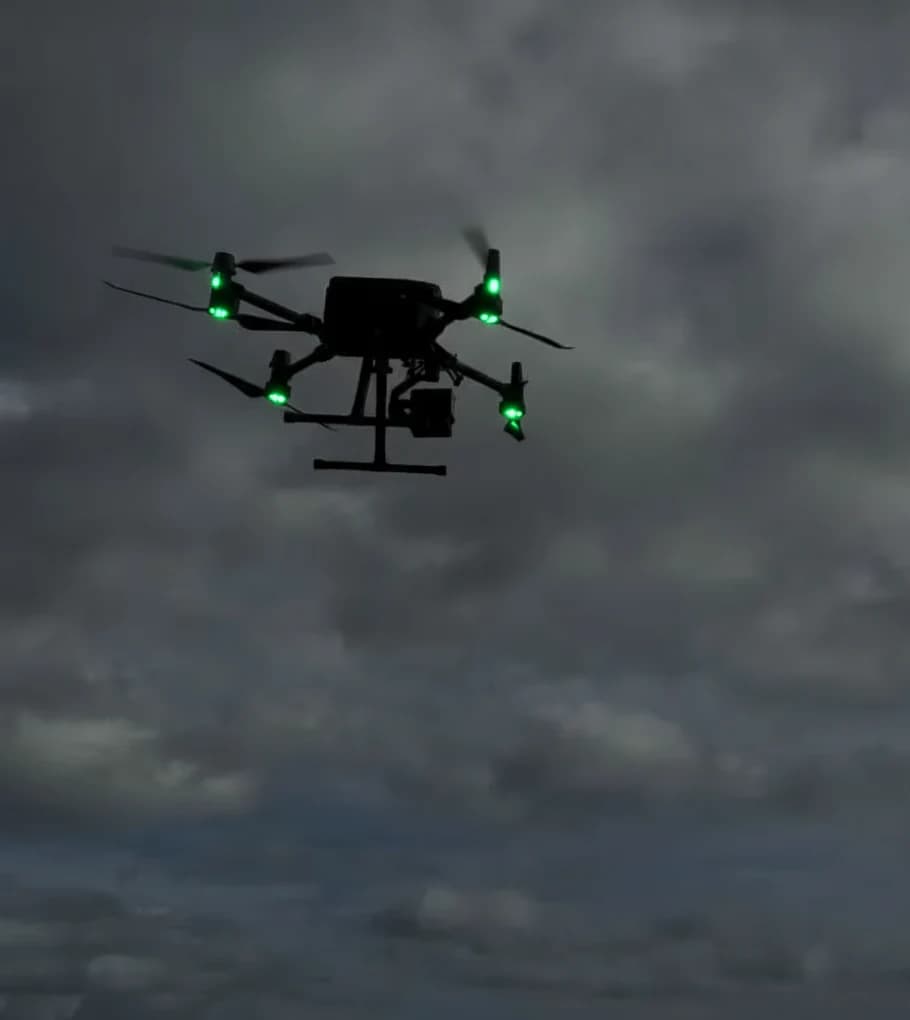
30 Second Summary
- Most consumer drones lack water resistance and can suffer permanent damage from rain exposure
- Water can cause short circuits, corrosion, and system failures in a drones critical electronic components
- Rain affects flight stability, sensor accuracy, and reduces battery life due to added weight
- Specialized waterproof drones with IP ratings like IP67 or IP54 are designed for wet conditions
- If flying in light rain, use port covers, apply hydrophobic coating, and keep flights under 10 minutes
Most consumer drones are not waterproof and can be damaged by rain
When it comes to flying drones in rainy conditions, most consumer models simply aren't built to handle water exposure.
Manufacturers like DJI, Autel, and Holy Stone design their standard drones with minimal water resistance, leaving critical electronic components vulnerable to moisture damage.
Water can quickly infiltrate your drone's motors, circuit boards, and battery compartments. Even light rain or mist poses significant risks, potentially causing short circuits, corrosion, or complete system failure. These damages aren't typically covered under warranty.
I learned this the hard way early in my career with a smaller drone caught in a sudden shower. It seemed fine after drying out, but intermittent sensor failures started a week later, eventually grounding it for good. It's a costly lesson you only want to learn once.
While some higher-end professional drones offer weather resistance with IP ratings (like IP43 or IP55), the average drone you've purchased for recreational use lacks these protections. If you're determined to fly in wet conditions, you'll need to invest in specialized waterproof drones or aftermarket waterproofing solutions.
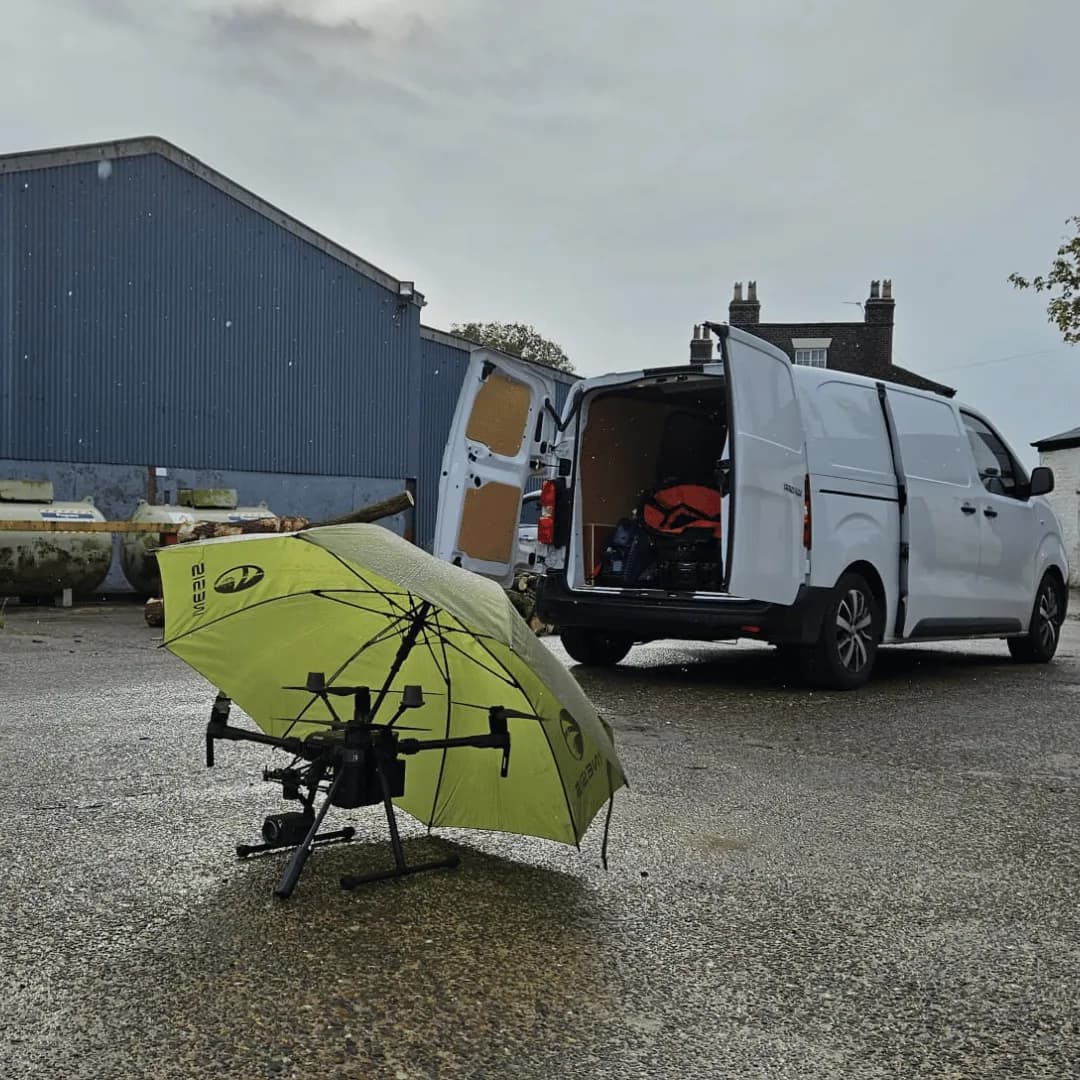
Rain can short-circuit a drone’s electronics and cause malfunctions
Three major electrical hazards emerge when rain contacts your drone's circuitry.
Short Circuits and Corrosion
First, water droplets can create short circuits between components, causing immediate system failures. Even small amounts of moisture bridging connections on circuit boards can trigger catastrophic malfunctions.
Second, rainwater often contains minerals and contaminants that conduct electricity. These impurities accelerate corrosion on sensitive electronic components, leading to permanent damage that isn't immediately apparent but surfaces days later. We often call this 'creeping corrosion' in the industry; the damage is done, just waiting to fail at the worst possible moment.
Signal Interference
Finally, moisture trapped inside your drone can disrupt signal transmission between the controller and the drone itself.
You'll notice this as erratic flight behavior, loss of control, or complete communication failure. This unpredictability is particularly dangerous when flying over hazardous areas or at higher altitudes.
Don't underestimate rain's impact on drone electronics—even brief exposure can permanently damage your investment.

Wet weather can reduce stability and sensor accuracy
Beyond affecting electronics, rain significantly impacts your drone's stability and sensor functionality.
Reduced Aerodynamics and Lift
Water droplets disrupt airflow around propellers, reducing lift and causing erratic movements.
Flying a drone in the rain feels sluggish and unresponsive; you can almost feel the drone fighting to stay stable. The added weight of accumulated water also forces motors to work harder, draining your battery at an alarming rate as they struggle to compensate.
Inaccurate Sensor Readings
Your drone's sensors suffer in wet conditions too. Camera lenses become spotted with water droplets, degrading image quality and video footage.
Ultrasonic sensors and obstacle detection systems can misinterpret raindrops as objects, triggering unnecessary avoidance maneuvers or providing inaccurate altitude readings. Even barometric pressure sensors might deliver faulty data in changing atmospheric conditions, affecting your drone's ability to maintain consistent altitude during flight.
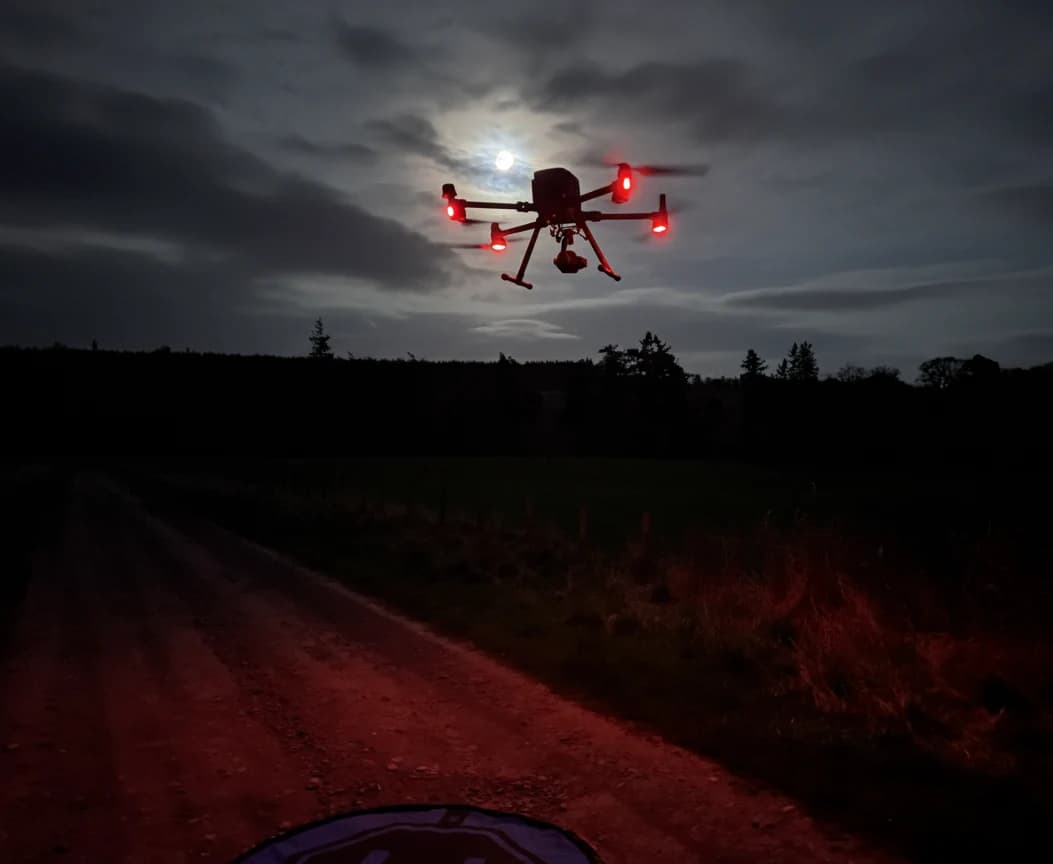
Specialised waterproof drones are built for flying in rain
While standard consumer drones struggle with rain, manufacturers have developed specialized waterproof models specifically engineered to operate in wet conditions. These drones feature sealed compartments that protect sensitive electronics and motors from moisture damage.
You'll find waterproof drones across various price ranges, from consumer models like the SwellPro Splash Drone 4 to enterprise-level drones like the DJI Matrice series. From my own experience flying models like the Matrice 300 RTK (rated at IP45) and the newer M30 (IP55), their performance in wet weather is genuinely impressive.
These drones are built to a different standard, and you can feel the stability even in a steady Scottish drizzle, which is often a necessity for commercial jobs that can't wait for perfect weather.
Despite this, even with these ratings, every flight in the rain increases long-term wear, and you're always checking seals meticulously post-flight. These specialized drones often include additional features like corrosion-resistant materials, hydrophobic coatings, and drainage systems to expel water.
Before purchasing, check the drone's Ingress Protection (IP) rating, which indicates its level of water resistance. IP67 or IP68 ratings suggest the drone can withstand temporary submersion, while IP54 or IP55 will handle rain but not underwater use.
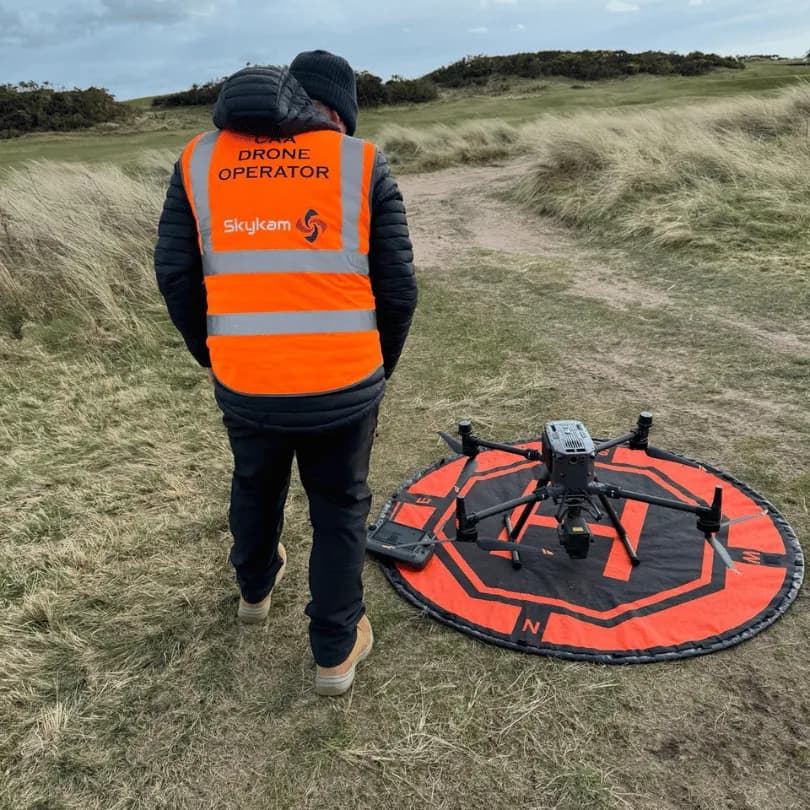
Understanding IP Ratings for Drones
An IP rating tells you how well a device is protected from both solids (like dust) and liquids (like water). Here’s a quick breakdown of common ratings you might see on weather-resistant drones:
IP Rating | Protection Level | Common Use Case |
|---|---|---|
IP43 | Protected from objects >1mm and water spray up to 60° from vertical. | Can handle light rain, but not heavy downpours or splashes from below. |
IP54 | Dust protected and shielded from water splashes from any direction. | Suitable for flying in moderate rain and dusty environments. |
IP67 | Fully dust-tight and can be submerged in 1 meter of water for 30 minutes. | Can survive accidental drops into puddles or shallow water. |
IP68 | Fully dust-tight and protected against long-term submersion. | Designed for significant water exposure, including underwater operation. |
Aftermarket Waterproofing Solutions
If you don't have a specialized waterproof drone, you might be tempted by aftermarket solutions. These products, like conformal silicone coatings or specialized sprays, are designed to create a water-resistant layer over your drone's electronic components.
How They Work: These coatings are applied directly to circuit boards and other sensitive parts to shield them from moisture.
Pros: They can offer a decent level of protection against light mist or unexpected drizzles.
Cons: Applying them can be a delicate process that risks damaging components if done incorrectly. Crucially, making these modifications will almost certainly void your manufacturer's warranty.
I consider these aftermarket solutions a high-risk gamble and they are in no way a substitute for a manufacturer-certified Ingress Protection (IP) rating. For me, an IP rating means I can trust that the entire drone has been holistically designed and rigorously tested to resist environmental intrusion—encompassing everything from its sealed body panels and protected connectors to its shielded motor bearings.
I see a DIY coating as providing only a superficial, unverified layer of protection on select components, leaving what I know to be numerous potential failure points exposed.
In my professional operations, I must rely on quantifiable specifications to make critical go/no-go decisions based on the weather; the ambiguity of a spray-on product introduces a level of uncertainty and risk I am simply not willing to accept.
That's why my rule is simple: if a mission requires me to operate in potentially wet conditions, I will only use a drone that is properly engineered and rated for the task.
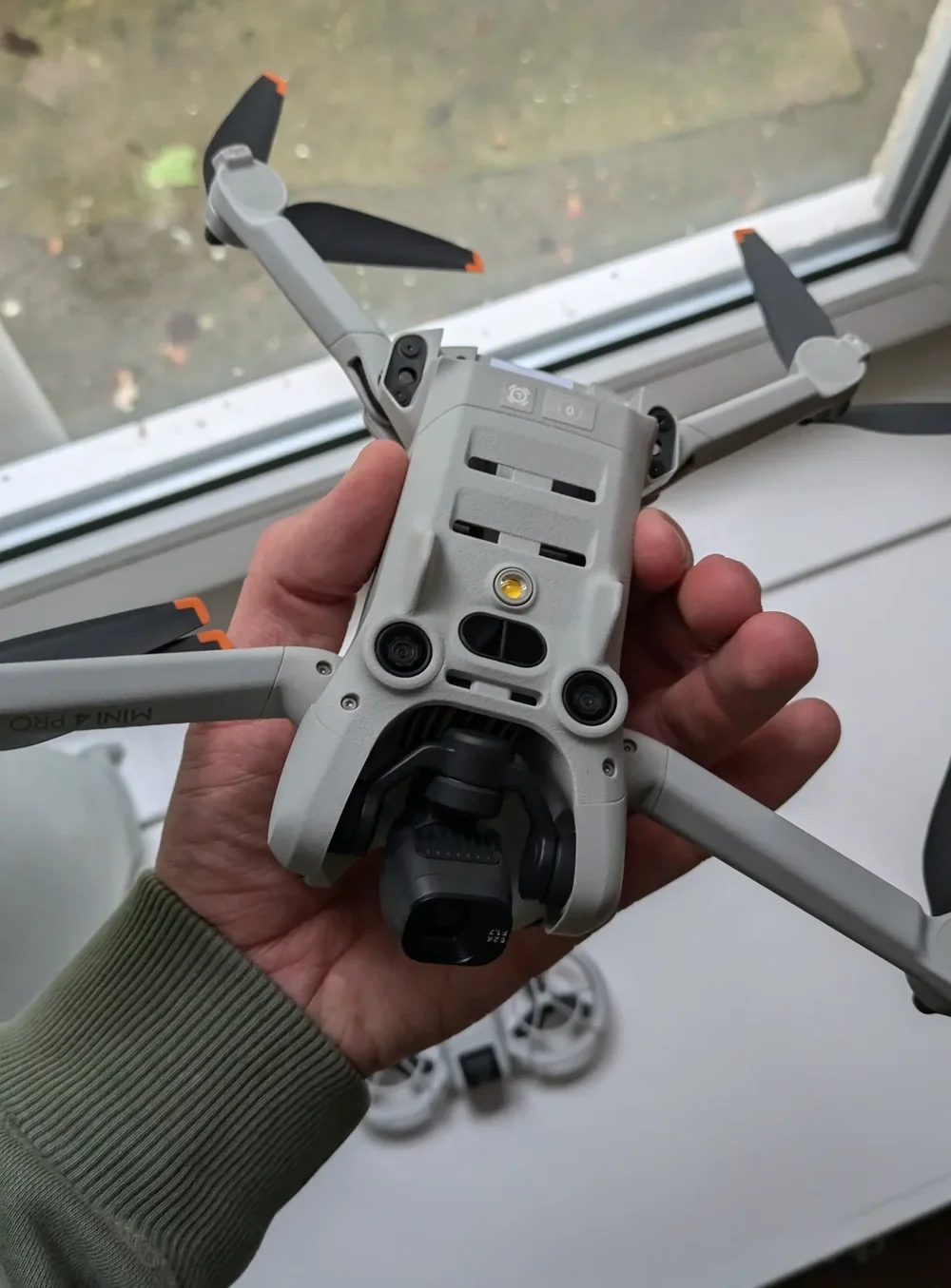
Flying in light rain still requires extra caution and protection measures.
Even with a waterproof drone, flying in light rain demands several precautionary steps to ensure safe operation.
Pre-Flight Checklist
Seal All Ports: Check that all port covers are securely sealed to prevent water from reaching sensitive electronics.
Apply Coatings: Consider applying a hydrophobic coating to your drone's body and camera lens to help repel moisture.
Monitor Conditions: Check the wind conditions closely, as rain often brings unpredictable gusts that can destabilize your drone.
Plan a Short Flight: Keep flights brief—about 5-10 minutes—to minimize exposure time.
Maintain Line of Sight: Always maintain a visual line of sight, which becomes more challenging in precipitation.
Know Your Escape Route: Before you even take off, plan a quick, clear path back to your landing zone. If the weather worsens, you don't want to be figuring this out on the fly.
Post-Flight Care
Thoroughly Dry: Immediately after landing, dry your drone with a microfiber cloth, paying special attention to motors, seams, and vents.
Remove the Battery: Take the battery out to inspect the compartment for any moisture and to let all parts air out.
Allow to Air Dry: Let the drone and the battery sit in a dry, well-ventilated area for several hours (or overnight). A small bag of silica gel placed in the battery compartment (with the battery removed) can help absorb any hidden moisture.
Despite these precautions, remember that manufacturers rarely cover water damage under warranty, so you're flying at your own risk.
Frequently Asked Questions
What Rain Intensity Is Considered Safe for Non-Waterproof Drones?
No rain intensity is considered safe for non-waterproof drones. Even light drizzle can damage your drone's electronics, motors, and circuitry.
Moisture can cause short circuits, corrosion, and permanent damage. You'll risk complete failure during flight if water penetrates critical components. If you must fly in damp conditions, you'll need to properly waterproof your drone first or invest in a drone specifically designed with weather resistance.
How Long After Rain Is It Safe to Fly?
You should wait until all surfaces are completely dry before flying after rain. This typically means at least 30-60 minutes in sunny, windy conditions, but could require several hours in humid weather.
Check your drone thoroughly, paying special attention to motors, battery compartments, and electronic ports. If you notice any moisture remaining, use a clean microfiber cloth to dry it completely before takeoff.
Can Aftermarket Waterproofing Solutions Protect Standard Drones?
Yes, aftermarket waterproofing solutions can protect standard drones. You'll find options like conformal coatings, silicone sprays, and drone-specific waterproofing kits that create water-resistant barriers.
However, they don't guarantee complete protection against heavy downpours. These solutions work best for light rain or mist exposure. Remember that improper application might damage electronics, and manufacturers typically won't honor warranties if you've modified your drone with third-party waterproofing products.
Does Rain Affect Battery Life or Charging Safety?
Yes, rain significantly affects your drone's battery life and charging safety. Water can cause short circuits in battery compartments, reducing performance and potentially damaging cells.
You'll experience faster battery drain in wet conditions. Never charge wet batteries—this creates serious fire and explosion hazards. Always thoroughly dry your drone and batteries before charging, and wait at least 24 hours after rain exposure to ensure all moisture has evaporated.
Are There Legal Restrictions for Flying Drones During Rainy Conditions in the UK?
There are no specific UK laws that prohibit flying a drone in the rain.
However, you are still bound by the CAA's standard visibility requirements under the Drone and Model Aircraft Code. The code requires you to always keep your drone in direct visual line of sight.
Heavy rain or mist can easily compromise this, putting you in breach of regulations. It is the drone pilot's responsibility to only fly when it is safe to do so. Always check the specific conditions before flying to avoid potential fines or prosecution.
Need to Fly in the Rain? Hire a Professional
Flying a standard drone in the rain is a recipe for disaster, risking electronic failure, instability, and costly damage. While specialized, weather-resistant drones are the solution, they represent a significant investment and require skilled handling.
When your project can't wait for clear skies, the challenge isn't just about finding a waterproof drone; it's about finding a certified operator experienced in managing the unique risks of flying in wet conditions. This is precisely the problem HireDronePilot solves. As the UK's premier managed marketplace, we connect businesses with verified professional drone pilots for hire who possess the IP-rated equipment and GVC qualifications to operate safely in adverse weather. We streamline drone services through competitive bidding, ensuring quality, compliance, and value for every aerial project across the United Kingdom.
Don't let the British weather ground your critical project. Find a qualified drone pilot with the right all-weather equipment today and get your job done safely and efficiently, rain or shine.
About the Author

Written by
Peter Leslie
Peter Leslie is a CAA-approved commercial drone pilot with 10+ years experience and over 10,000 flight hours. He holds the GVC and A2 CofC drone licences with full CAA Operational Authorisation. Peter is a member of ARPAS-UK, the UK's non-profit trade association for the drone industry. He founded HireDronePilot to connect UK businesses with qualified, insured drone operators.
Looking for More Drone Work?
Join the UK's leading network of professional drone pilots and grow your business.
Open Access
Bid on any job - all jobs open to all pilots
Grow Revenue
Access high-value commercial projects
Stay Busy
Fill your schedule with regular work
Related Articles

Our Drone Survey Service In Stirling, Scotland
Bringing you Stirling drone survey data from areas no one else can fly.

How Much Does A Drone LiDAR Survey Cost
Forecasting your drone LiDAR survey cost requires understanding what's hidden beyond the initial quote.

Step By Step Process Of Drone LiDAR Survey
Next, discover the crucial post-flight steps that determine your survey's success.